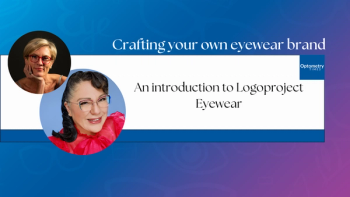
Creating an inclusive and equitable workspace
Ruth Shoge, OD, MPH, FAAO, shares key takeaways from her EyeCon 2022 presentation, "Diversity in practice, creating an inclusive and equitable workspace."
Ruth Shoge, OD, MPH, FAAO, caught up with Optometry Times' Emily Kaiser to discuss key takeaways from her presentation, "Diversity in practice, creating an inclusive and equitable workspace," which she co-presented with Adam Ramsey, OD, during EyeCon 2022 held in Marco Island, Flordida.
This transcript has been edited for clarity:
Kaiser:
Hi, everyone. I'm Emily Kaiser with Optometry Times and I'm sitting down with Dr. Ruth Shoge to discuss her presentation on DEI in your optometry practice at EyeCon 2022 in Marco Island, Florida. Welcome, Dr. Shoge. Thank you for taking the time to talk to us.
Shoge:
Thank you so much. I'm happy to be here. And thank you for the invitation.
Kaiser:
Can you give us a brief overview of your presentation?
Shoge:
Sure. So my presentation is called, "Diversity in practice, creating an inclusive and equitable workspace." And we really want to give the audience just an overview of what diversity, equity, inclusion, and belonging looks like in a clinical private practice setting. Because I think a lot of times people are used to hearing about it in academic settings, and a lot of questions that we get is, "Well, how do I make this applicable to my day-to-day experience, running a private practice?" So that's what Dr. Ramsey and I will be attempting to achieve with our presentation.
Kaiser:
Sounds fantastic. And how should clinicians respond to this information?
Shoge:
I think they should take this as a great starting point. We can accomplish only so much in one hour, but hopefully it's a good starting resource and reference for them. And I'm hoping they maybe find one or two things that they can practically apply to their practice when they leave the conference.
Kaiser:
And what do you hope optometrists take away from your talk?
Shoge:
I want them to know that DEI doesn't have to be a scary endeavor. A lot of it can feel kind of like common sense, to be honest. And sometimes we just need to be reminded of some pretty basic human principles. And so I want them to feel that, "Yeah, I can do this. I can accomplish this. This is not going to be hard to implement. And I can get my staff and other doctors in my practice on board." I don't want them to feel intimidated. I want them to leave thinking like oh, yeah, this is not so bad. I can definitely do this.
Kaiser:
Yeah, so definitely like empowering. That sounds fantastic. Thank you so much for sharing.
Shoge:
No problem. Thank you.
Newsletter
Want more insights like this? Subscribe to Optometry Times and get clinical pearls and practice tips delivered straight to your inbox.














































.png)


